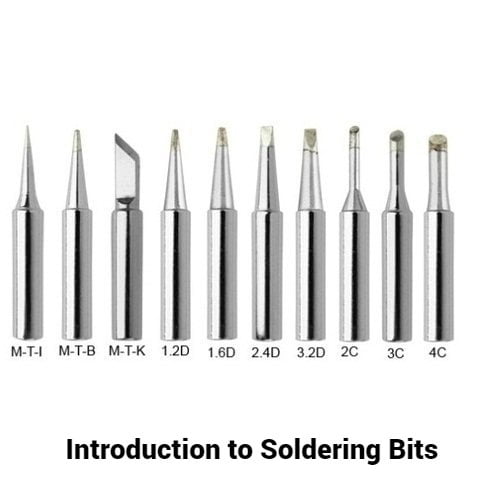
Soldering is a fundamental skill in electronics, electrical and DIY projects, and having a good understanding of soldering bits is essential for achieving high-quality solder joints. Soldering bits, also known as soldering tips or soldering iron tips, is important in the soldering process. In this blog post, we will provide you with a comprehensive introduction to soldering bits, covering their types, sizes, materials, maintenance, and tips for choosing the right one for your projects.
What is soldering?
Soldering is a process of joining two or more metal pieces together by melting a solder metal into the joint. The solder melts at a lower temperature than the metal pieces being joined, and it flows into the joint, bonding the pieces together.
Soldering irons have interchangeable tips, also known as bits, that vary in size and shape for different types of work.
Types of Soldering Bits
There are various types of soldering bits available, each designed for specific soldering applications. Here are the most common types:
Conical Tip: The conical tip is pointed and tapers to a fine point. It is excellent for precision soldering, working with small components, and reaching tight spots.
Chisel Tip: This is the most versatile type of soldering bit, featuring a flat, angled tip. It allows for a large surface area contact, making it suitable for both through-hole and surface mount soldering.
Bevel Tip: The bevel tip has a sloped edge, making it useful for drag soldering and reworking..
Round Tip: This tip is good for general soldering and for heating large areas.
Spoon Tip: This tip is good for desoldering and for working with heat-sensitive components.
Hoof Tip: Resembling a hoof shape, this type of soldering bit is ideal for soldering larger components and ground planes due to its larger contact area.
Soldering Bit Maintenance
Proper maintenance is essential to extend the life and ensure optimal performance of soldering bits. Here are some maintenance tips:
a. Regular cleaning: Clean your soldering bit after each use by wiping it with a damp sponge or brass wire cleaner. This removes flux residue and oxidation, preventing build-up that can degrade heat transfer.
b. Tip tinning: Apply a thin layer of solder to the tip after cleaning to protect it from oxidation. Tinning helps with heat transfer and solder flow during soldering.
c. Avoid excessive heat: Exposing soldering bits to excessive heat, such as leaving them idle at high temperatures, can cause thermal stress and damage the plating. Always follow the manufacturer's recommended temperature guidelines.
Choosing the Right Soldering Bit
Selecting the appropriate soldering bit for your project is crucial for achieving quality solder joints. Consider the following factors when choosing a soldering bit:
a. Application: Determine whether you need a fine, pointed tip for precision work or a larger tip for more significant components or ground planes.
b. Size: Consider the size of the soldering bit based on the size of the components you will be soldering.
c. Plating: Look for soldering bits with high-quality plating, such as iron, nickel, or chromium, for better heat transfer and durability.
d. Compatibility: Ensure that the soldering bit is compatible with your soldering iron or station.
Here are some additional tips for using soldering iron tips:
Always use the correct tip for the job.
Clean the tip regularly to prevent oxidation.
Apply flux to the tip before soldering.
Heat the workpiece evenly before adding solder.
Don't overheat the tip.
Remove the soldering iron as soon as the solder has flowed into the joint.
Allow the joint to cool completely before handling it.
Conclusion
Soldering bits are essential tools for achieving reliable solder joints in electronics and DIY projects. Understanding the types, sizes, materials, maintenance, and selection criteria of soldering bits is essential while Soldering.
If you are looking for different types of soldering bits and soldering related components like solder metal, solder metal base stand, solder paste, flux, soldering iron, desol pump, sponge, from brands like Armsol and many more, reach out to Campus Component today!
Related Blogs:-

